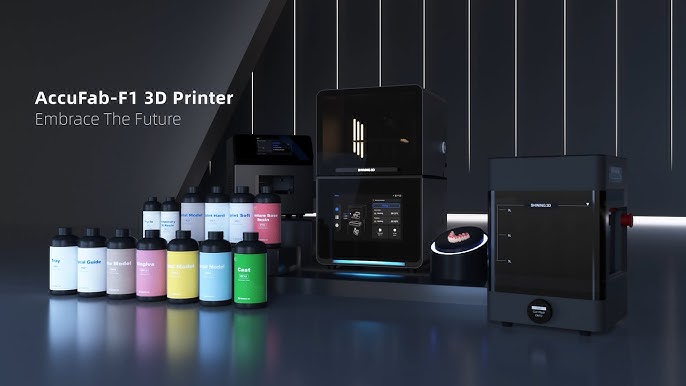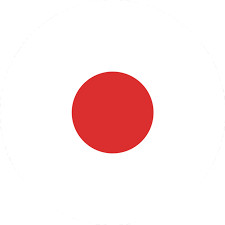Table of Contents
3D printing (also called additive manufacturing) is transforming the dental industry, from precise surgical guides to personalized crowns, bridges, and clear aligners. This technology is making treatments more efficient and convenient.
In the dental field, where printing accuracy and surface finish are extremely demanding, choosing the right dental 3D printer is undoubtedly crucial. Different printers vary in printing speed, precision, ease of use, and functionality. For example, the same dental model can take from tens of minutes to several hours to print on different machines. This not only affects clinic efficiency but also impacts the patient experience.
What is the best dental 3D printer for your clinics? Consider the following factors to find the most suitable one to invest in.

What Are the Types of Dental 3D Printers?
To achieve the precision and efficiency required in dentistry, light-curing 3D printing technology is the ideal choice. Among these, digital light processing and liquid crystal display are two mainstream technologies:
1. Digital Light Processing (DLP)
DLP 3D printer utilizes a digital projector to irradiate the entire layer’s UV light pattern onto the photosensitive resin in a single exposure. The illuminated areas in the image solidify, while the dark areas remain liquid. This entire layer curing method ensures that regardless of how complex each layer’s structure is, the curing time remains constant, resulting in generally faster printing speeds while maintaining high precision.
Additionally, DLP equipment features long-lasting light sources and simple maintenance, enabling prolonged high-load operation.
Its high precision and smooth printing surfaces make it particularly suitable for producing dental restorations with demanding detail requirements, such as crowns, bridges, and surgical guides. The fast printing speed also allows it to handle the demands of busy dental clinics.
2. Liquid Crystal Display (LCD)
LCD 3D printers are similar to DLP in that they also use an entire layer curing method, but the light source comes from a UV LED array. An LCD screen acts as a mask, paired with a UV LED array below to provide uniform illumination. The curing areas can be adjusted by the screen’s light-blocking and light-transmitting zones.
LCD printers offer relatively fast speeds, but their printing accuracy depends on the LCD’s resolution. Lower-end models may experience light leakage. Plus, the LCD panel itself has limited UV transmittance, which may result in slower resin curing speeds or compatibility issues in some cases. It’s better to invest in high-end printer models.
Both are mainstream technologies in dental 3D printing. When making a choice, consider factors such as budget, printing requirements, and frequency of use.

What’s the Best Dental 3D Printer for Your Clinics?
How to choose 3D printers? There are several factors to consider, including printing speed, throughput, accuracy, material compatibility, use convenience, software integration, and post-processing capabilities.
1. Printing Speed and Throughput
The printing speed significantly impacts your clinic’s efficiency. Will you wait tens of minutes or several hours? For same-day treatments like immediate implants, temporary restorations, and retainers, high-speed printing can reduce patient wait times.
DLP technology enables fast printing through full-layer curing. For example, SHINING 3D DENTAL’s AccuFab-F1 can print surgical guides, temporary teeth, and more in just about 15 minutes.
Additionally, throughput is crucial for dental labs. Printers with large build volumes may produce more parts in a single run, thus handling more cases.
2. Printing Accuracy
Precision in dental prosthetics is the top priority for any dental clinic. Especially for All-on-X dental implant cases, even minor deviations can affect the passive fit of implants and lead to failure.
The accuracy of 3D printing for dentistry depends on various factors such as 3D printing technology, materials, and post-processing, which need to be evaluated to ensure the final dental restorations. To ensure authenticity, clinics can consult manufacturers for scan data and request samples to measure and verify the fit.
3. Material Compatibility
What printing materials does your clinic use? Can the 3D dental printer support materials from third-party manufacturers? These are also factors to consider when selecting a dental 3D printer.
Some 3D dental printers can only use proprietary materials, while others employ an open system that accommodates third-party materials. However, compliance verification is necessary to avoid producing risky devices.
4. Ease of Use
If the dental 3D printer features a high level of automation, such as integration with cleaning and curing equipment, it can reduce reliance on manual labor and ease the clinic’s workload. Devices equipped with intuitive software interfaces allow medical staff to quickly get started.
Some high-end models also offer smart sensing capabilities, monitoring the printing platform, resin tank, and optical machine in real-time to detect missing parts or residues, ensuring error-free operation.
5. Software Integration
Dental 3D printers seamlessly integrate with intraoral scanners and CAD software, enabling a fully digital workflow from scanning and design to printing, thereby improving work efficiency.
In denture design and immediate loading surgeries, this data integration not only alleviates time pressure for clinics but also prevents errors caused by data transfer.
6. Post-processing Capabilities
The post-processing capabilities of dental 3D printers directly affect operational complexity. Not all 3D printers for dental offices offer a complete workflow from printing to cleaning and curing.
High-quality equipment features easy-to-remove designs and integrated cleaning and curing systems, eliminating the hassle of manual operations. Additionally, intelligent parameter adjustments ensure consistent high-quality output, saving clinics time and effort in post-processing.

Get Your Optimal Dental 3D Printer Options
If you’re looking for a highly efficient and precise dental 3D printer, the SHINING 3D DENTAL AccuFab-F1 is definitely worth considering. This device utilizes advanced DLP light-curing technology, capable of printing various dental restorations such as crowns, surgical guides, and orthodontic models with high precision (±25 μm) and speeds of up to 150 mm/h (depending on material and layer), meeting clinics’ demands.
Other features include:
- · An intuitive and user-friendly interface allows dentists to get started quickly.
- · A HyperClear resin tank produces hyper-clear print, featuring a three-buckle filter membrane design for quick installation and removal.
- · Real-time monitoring of the printing platform, resin tank, and optical machine for missing parts or residues, with feedback displayed on the screen.
- · Supports automatic integration with washing and curing equipment.
- · The dual heating design for the material tank significantly improves success rates and compatibility with high-viscosity materials.
- · An open printing material system compatible with 13 types of resins.
Conclusion
In summary, choosing the right 3D printer for dental offices requires considering core factors such as printing accuracy, speed, material compatibility, ease of use, and post-processing convenience. Then, make a decision based on your clinic’s operational needs and budget.
The SHINING 3D DENTAL AccuFab-F1 has earned praise from many clinics for its comprehensive functionality. Contact us now to experience the high efficiency brought by dental 3D printing!
 ENG
ENG








